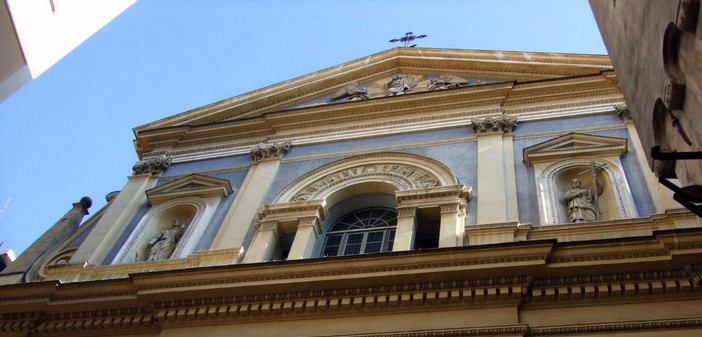In the heart of old Nice, in this street known as rue Droite because it runs from Pairolière Gate to Marine Gate, you will find this church on a small square just a stone’s throw from the Sainte Réparate Cathedral and the Chapel of the Red Penitents.
This building is typically Baroque in the Jesuit style. The construction work for the Gésu or Jesus began in 1612; at that time, it was a modest chapel, La Chiesetta, dedicated to the holy name of Jesus and to Saint Just.
Thirty years later, in 1642, the church we know today was built. It was completed at the end of the 17th century. Oriented west-east, the construction started at the porch and finished at the choir in 1696.
In 1802, it became a parish church, replacing Saint Jacques, and dedicated to Our Lady of the Annunciation and Saint Rita. The architectural layout of this church follows the Council of Trent and the Catholic Reformation. The congregation should be able to attend services without any obstacles, like those found in churches with multiple aisles. It is a bright, well-clear, and airy church. Baroque art dominates with its gilding, stuccoes, decorations, and cherubs—there are said to be 160.
After the brief of Pope Clement XIV in 1773, the Jesuits were expelled from the County of Nice a year later. Their college became the Royal College. This order, although reinstated in 1814 by Pope Pius VII, did not return to Nice. The decoration was completed in the 19th century.
The trace of the Jesuits is visible with the Sacred Heart of Jesus, a painting by Costa, where Saint Margaret Mary Alacoque is depicted. They were the ones who spread this devotion in the 17th century to counter Jansenism. The pulpit is typically Baroque with an extended arm holding a cross.
In front of the choir, a marble slab leads to the underground vaults. The Jesuits remained in Nice for only a century and a half. With the 19th-century processional group, the Dominicans gave a nod to history. A dog holds a torch in its mouth.
Could this attribute of Saint Dominic, the patron saint of the Dominicans, have been possible when the Jesuits were presiding over the fate of this church? There was a cloister accessed from the sacristy. It was also there that this Chiesetta of 1612 was located.
Thierry Jan


